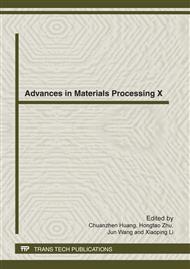p.3
p.8
p.13
p.20
p.26
p.32
p.38
p.44
p.51
Wavelet Transform Denoise of PCB Drilling Force Signal
Abstract:
In the PCB micro drilling, because the force signal is tiny, and when the micro-drill drill to a certain degree of multilayer PCB, alternate force signals will not appear obvious, through to the drilling force signal analysis, we can know the drill bit position and the materials to the influence of the drill failure, so the drilling force signals denoise seems extremely important. In the processing of the non-stationary signal, traditional signal processing method has a certain extent of insufficient, using the wavelet packet decomposition signal, the white noise variance and amplitude decrease with the increase of wavelet scales, but the signal variance and amplitude has nothing to do with the wavelet transform. According to the view of the signal energy, first of all, we make the multiscale decomposition of the signal, then, by using some of the wavelet packet that has efficient energy to reconstruct the original signal. Comparing with the traditional threshold denoising ,using this method in the test signal to deal with the noise can effectively eliminate the white noise interference, and has good denoising effects besides the simple calculation.
Info:
Periodical:
Pages:
26-31
Citation:
Online since:
April 2012
Authors:
Keywords:
Price:
Сopyright:
© 2012 Trans Tech Publications Ltd. All Rights Reserved
Share:
Citation:


